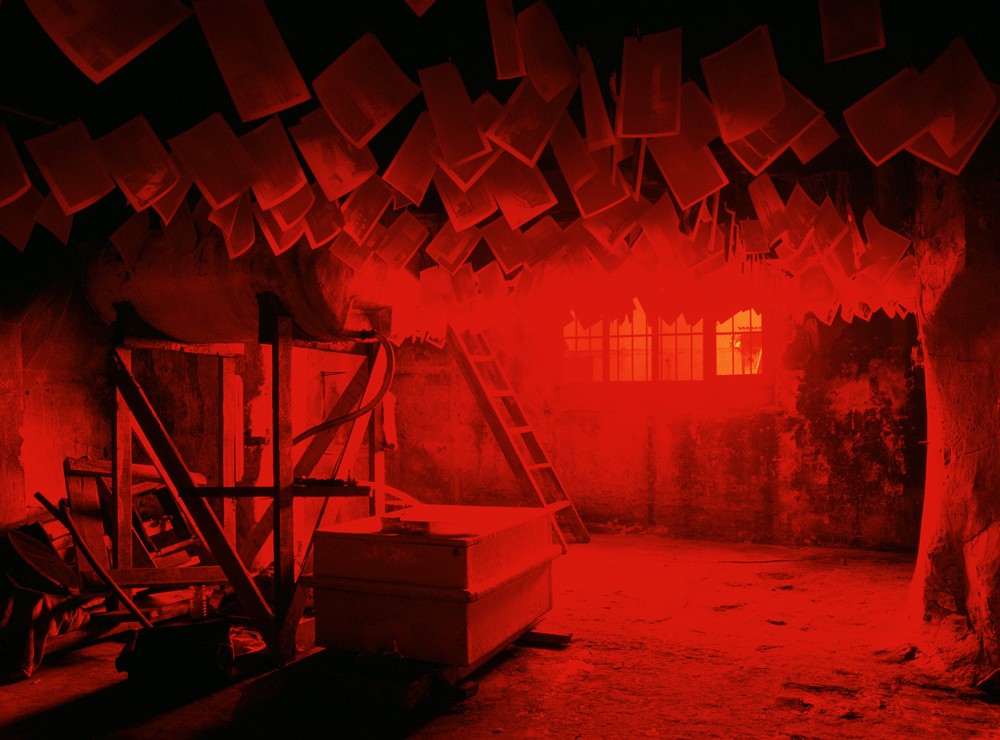Space Stories: An Interview with Mike Nelson
Mike Nelson is always in a world of his own. Beginning in the early 1990s, he has been devising and constructing immersive environments of which he is the principal architect and primary storyteller. Whether dealing with space or narrative, what he makes is compelling and disconcerting in equal measure. In the following interview he comments on the way Jorge Luis Borges formulates H P Lovecraft’s “favourite genre, the fear of the unseen.”

What is so fascinating about Nelson’s work is that it’s not what is unseen that instills a range of responses from unease to fear, but the profusion of what he presents for us to see; there is plenty to look at in a Nelson installation. They are characterized by a meticulous attention to detail: the hanging of a calendar on a wall and a fire extinguisher below the counter in an English minicab office, the carefully arranged scattering of tools and objects in an unnamed workroom, the placement and colour of a garbage can at the end of a hallway, the smudged tire marks on the turning wall of a corridor, the density of a coating of dust on a tabletop–all these details are the trace and register of a sensibility that is intensely formal. His tone is flawless.
Nowhere is this scrupulous chaos better demonstrated than in To the Memory of H.P. Lovecraft, his intervention in London’s Hayward Gallery in 1999, and its reconstitution nine years later in the Villa Arson at the Centre National d’Art Contemporain in Nice. The beauty of the monster’s activity is undeniable, as is the commensurate beauty created when the artist reconfigures walls into plinths. It’s as if a room full of minimalist cubes had been subjected to a terrible violation.
He is the holder of fragments of practical and arcane knowledge. Nowhere is that range more evident than in The Coral Reef, first exhibited at Matt’s Gallery in London in 2000 and reinstalled in the Tate in 2012 after the gallery acquired the piece. The Coral Reef is a labyrinth of 15 rooms that bear evidence of the people who inhabit them–occultists, stoners, revolutionaries, heroin addicts, bikers, pornographers, evangelical Christians and Islamic taxicab drivers. Each of the rooms represents a system of belief; taken together, they are the coral existing below the surface of a vast economic ocean.
Typically, Nelson’s work embodies a politic that is both abstract and personal; in addition to what he articulates as a prevalent economic belief structure is an encouragement of more modest proportion. He invites us “to become lost within a world of lost people.” There is much that is confusing about a journey through one of his environments. But what is certain is that you give over to it. He conjures some kind of spatial alchemy, in which an accumulation of quotidian objects, carefully arranged in constructed rooms, is a transformative experience. For him, the object is in “a state of always becoming.” For us, as viewers, the spaces his objects inhabit speak to an identical condition. After an encounter with any of the worlds according to Mike Nelson, what remains is a visceral memory. He makes forgetting impossible.
Mike Nelson has exhibited major works in a number of international biennials, including Istanbul, Sydney and Singapore. He has twice been shortlisted for the Turner Prize and represented Britain in the 54th Venice Biennale in 2011.
The interview is an edited collage of four separate events. The core is taken from the 6th annual Shenkman Lecture, which took the form of a conversation at the University of Guelph on March 21, 2012. The following day, Mike Nelson answered questions in a graduate seminar in the School of Fine Art and Music. The other pair of interviews were conducted by Robert Enright in London in January of 2012.

